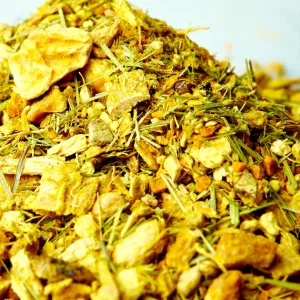There are two kinds of fear: good fear and bad fear.
Good fear is when the hairs stand up on the back of your neck. The kind of fear that tells you to cross the street for “some strange reason.” The kind of fear that gives you superhuman strength in dealing with sudden danger. The kind of fear that immediately threatens your physical survival and that prepares you for dealing in the short term.
That’s the good kind. It’s rooted in our animal instinct of pure and absolute protection of ourself and our clan. Good fear that we only want to experience a few times in life if possible.
Then there’s bad fear. The fear that creates the same kind of physical sensation you get from good fear: increased heart rate. Blood flow to the extremities. Rapid short breath. Bad fear is rooted in all the “What if blahblahblah happens?” What if? What if? What if? Bad fear keeps us on the treadmill of mediocrity. Bad fear keeps blood out of the brain, where we need it the most in order to make effective decisions.
Why do we get bad fear and how do we deal with it?
We get bad fear because we want it. Fear in the short term can be good. Fear in the big picture and in the long term is not good. It wears us down. It’s chemically addictive. It prevents us from using our brain. And most importantly, we create bad fear because it keeps us right where we are. Hobbling us, bad fear chains us to the world we know. Bad fear saps us of life, slowly. It must be destroyed.
Why and how does it do this? Bad fear keeps us from changing. We don’t want change because change is scary. Yep. Change is scary, and so we’d prefer to keep things stagnant, not change, and staying fearful is a great way to stay put. But here’s the funny part: Everything will change! And it’s the clinging to “the way things are” that actually causes the most pain and suffering, within us and around us.
So, what to do? Embrace change and kill bad fear.
We cling to that safe harbor of the “known” because the unknown wide ocean is just so darn unknown, so knee-wobbly scary. But consider this, what if the early explorers always kept to the same known safe harbors. Who would have finally ventured out, way out, into the wild blue ocean to seek and journey? For what? For the unknown. For change. It takes courage to venture to the unknown territories of ourselves and the world around us. To venture to the unknown. Here’s how to do it:
1. Harness Energy
A car with no gas goes nowhere. Without energy we go nowhere. Seems obvious and yet so few really focus on how to create and harness our internal energy. Our energy comes from what we put in our bodies (mostly vegetables, organic, and no processed foods), how much we recharge (sleep 8 hours a night), and how well we take care of our machinery (exercise – something, anything, just use the body). Our energy is our most important asset. No energy no change, just a lot of fear and loathing and stagnancy. Start with the energy or you’ll go nowhere.
2. Practice Awareness
With a full tank of energy we can begin. To see. To hear. To become aware of the situation at hand. Just labeling the actual fear disassociates it from us and allows the first step in moving forward, relaxing, and changing to a “towards, positive” state of being. There’s a quote I like, “If you know what you’re doing, then you can do what you want” (Moshe Feldenkrais).It’s true.
Learn to practice being aware and things get clearer and easier to deal with. Learn to practice awareness. Rituals (like tea!) certainly help by serving as awareness training grounds. Just noticing things, feelings, sensations, surroundings, helps prevent getting overwhelmed by them. Feeling fearful? Notice the feeling, and label it “fear.” Notice what happens. Does it get more or less consuming?
3. Focus
While awareness let’s us “see” and identify what’s happening, focus let’s us harness our energy to do something about it. The key with focus is that it requires banishing distraction. First becoming aware of it, then banishing it. But distraction feels good. It’s addictive. It releases dopamine, a chemical in our body that is released when we see something new (it’s meant to protect us by drawing our attention to a new threat). Similar to cocaine actually in the feel good effects. And yet getting distracted hurts awareness. And if we’re not aware then we stay stuck, in that sticky safety of the known. Focus is connected to awareness because we need to be aware of that pull of distraction. But, we need the energy and strength to say “no” to it, to remain on task, to stay focused. Good ample energy, gives us willpower, to stay focused.
4. Change
And then things change. We see what’s going on. And then attack it with our focus. Raw clay goes from a blob of earth to a functional teacup. It changes. An idea goes from an electrical impulse in the brain to a business plan. A bad habit goes from compulsion to freedom. We venture into the wide open ocean with no land in sight. And we’re ok with it.





